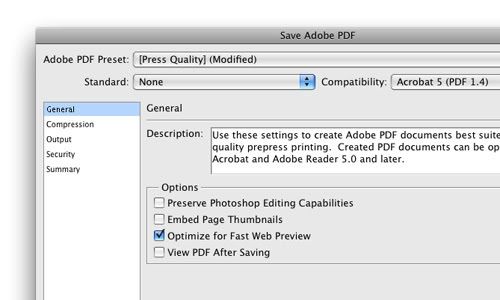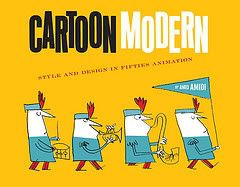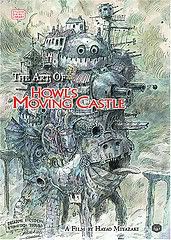
The point of this tutorial is to create a file, small enough to email or send to your clients, making sure that they can download and use your file effortlessly. This tutorial is for Photoshop and Illustrator users.
I work in an environment where people request for different file formats every time, and I write from that experience.
Before sending work to your client, there are two essential questions to ask:
- 1. What file format do they need the work to be in?
- 2. Do they need to do any changes on the file by themselves later on?
If you answer yes to the second question, you'll have to snail mail them a disc with your files on it. The files are going to be big.
I'll explore the more popular file formats, and how to reduce file sizes when working with them. At all times, keep a master copy, the file with all the layers and edits you can work on, also known as the un-flattened version of the file. I'll be touching on file saving options impacting on file sizes only, all other options you can read up from Adobe Help.
The methods I use involve compression. There will be some loss of image quality in exchange for file size savings. You'll have to find a balance between the two yourself.
Inside Photoshop- JPEG -JPEG is pretty much universal. Almost everyone can open and print directly with it. Before you save as, zoom in to 100% to view your image large. You'll find out why soon. When you save as, you'll see this pop up below.

Just under the Preview check box, you'll see the potential file size. As you adjust the image quality with the slider, make sure you check the Preview check box. That way, you can see the changes the compression does to the quality of your image. If you have view your file at 100%, you'll be able to see these changes easily.
- EPS -When you're saving it as a Photoshop EPS file, the most important option to check is the JPEG (maximum quality) under Encoding. If you have text inside the file, choose to check include vector data as well.

In this process, your work will be flatten, compressed with JPEG encoding, then saved. The file size savings can be huge depending on which JPEG quality you have chosen earlier. It's not uncommon to compress a 100mb working file into a Photoshop EPS file which is below 10mb.
- PDF -If your client wants the file in PDF, cool too. You can use JPEG compression inside PDF files. When you do a save as, choose the Photoshop PDF format from the format drop menu. The following pop up will appear.

The important thing to note here is to choose Press Quality or High Quality Print from the Adobe PDF preset drop menu.
Uncheck the Preserve Photoshop Editing Capabilities.
Click on the Compression tab on the left and you'll see the screen below.

Here you can downsample the resolution of the image file. You just have to make sure that you're choosing the same pixels per inch (PPI) as your client printer's dots per inch (DPI). A default of 300 PPI should get you a very high resolution print.
Your file size is dependable on the compression method, I chose JPEG here, and the image quality. For a 100mb file, I was able to compress it to under 3mb, when I set the image quality to High, instead of Maximum.
Text will still retain their vector qualities.
- TIFF -When saving as a TIFF file, choose not to include layers, as shown below. This will flatten all the layers into one.

There are plenty of compression options to choose for TIFF files. The one with the best file size savings comes from JPEG. You can choose the level of compression you want.
 Inside Illustrator
Inside IllustratorIt's difficult to save a small file using Illustrator EPS if you have placed images inside the file. Snail mail's the way.
- Illustrator PDF -The dialogue box is almost similar to Photoshop's. Again, choose either Press Quality or High Quality Print.
Uncheck Preserve Illustrator Editing Capabilities.

Under the compression tab, choose the number of PPI/DPI to downsample to. Ask your client for the magic number. 300 is default, and pretty safe.
For Compression, just leave it at Automatic (JPEG) or JPEG.
The Image Quality drop menu directly impacts the file size. Choose the one that saves a PDF that shows visually almost no difference, but creates a smaller file size. It's typically either the Maximum or High option.
- JPEG -If you want to save the Illustrator file as a JPEG, you have to do it from the Export menu option. Again, you'll see familiar options.

Note here that with the JPEG, you'll lose the vector qualities.
Choose the quality and make sure you open and preview JPEG file before sending off. Unlike Photoshop, there's no on the fly Preview function here.
- Other Illustrator file formats -
You can export your Illustrator file as other file formats. But they don't typically allow for compression.
One work around might be to import the file into Photoshop and see what you can do there.















































